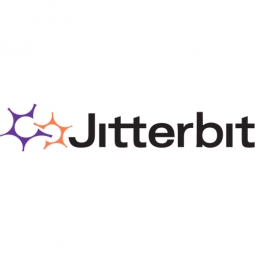Customer Company Size
Mid-size Company
Region
- Europe
Country
- United Kingdom
Product
- ServiceMax Platform
- ServiceMax Mobile for iPad
Tech Stack
- Salesforce
- SAP
- Jitterbit
Implementation Scale
- Enterprise-wide Deployment
Impact Metrics
- Productivity Improvements
- Cost Savings
- Customer Satisfaction
Technology Category
- Functional Applications - Enterprise Resource Planning Systems (ERP)
- Functional Applications - Remote Monitoring & Control Systems
Applicable Functions
- Maintenance
- Logistics & Transportation
Use Cases
- Predictive Maintenance
- Remote Asset Management
Services
- System Integration
About The Customer
SPP Pumps Limited is a global manufacturer and service provider of pump systems. They have pumps installed on all continents that help distribute water, oil and sewage. Therefore, service is a big part of SPP Pump’s business. Business as usual for SPP Pumps meant service teams were bogged down with paperwork and sales had limited visibility into the customer and inventory. As SPP Pumps continued to grow, they knew their paper processes were not scalable to support revenue growth. SPP Pumps offers planned maintenance, remedial and emergency break/fix services to their customers through a network of highly trained engineers who can upgrade, enhance or completely overhaul the company’s pumps and any other pumps customers have installed.
The Challenge
SPP Pumps had a completely manual processes to manage and schedule more than 60 field service calls a day for their 30+ field engineers. The invoice generation process took up to 14 days to complete, typically. It involved paper forms; signed and then faxed back to the office. Administrative staff had to manually enter work order information into SAP before an invoice could be generated and sent to the customer for payment. There was no guarantee that what was faxed and entered was accurate or complete.
The Solution
To optimize their IT investments and to improve their service cash flow, they integrated ServiceMax with their back office SAP ERP system. Now with ServiceMax, SPP Pumps streamlines their scheduling and work order management processes. They use Jitterbit to connect their SAP order management, accounts and service orders records to ServiceMax. They were able to connect the two systems within days and finish the process on integration within a few weeks.
Operational Impact
Quantitative Benefit

Case Study missing?
Start adding your own!
Register with your work email and create a new case study profile for your business.
Related Case Studies.

Case Study
Remote Monitoring & Predictive Maintenance App for a Solar Energy System
The maintenance & tracking of various modules was an overhead for the customer due to the huge labor costs involved. Being an advanced solar solutions provider, they wanted to ensure early detection of issues and provide the best-in-class customer experience. Hence they wanted to automate the whole process.
.png)
Case Study
Improving Vending Machine Profitability with the Internet of Things (IoT)
The vending industry is undergoing a sea change, taking advantage of new technologies to go beyond just delivering snacks to creating a new retail location. Intelligent vending machines can be found in many public locations as well as company facilities, selling different types of goods and services, including even computer accessories, gold bars, tickets, and office supplies. With increasing sophistication, they may also provide time- and location-based data pertaining to sales, inventory, and customer preferences. But at the end of the day, vending machine operators know greater profitability is driven by higher sales and lower operating costs.

Case Study
Predictive Maintenance for Industrial Chillers
For global leaders in the industrial chiller manufacturing, reliability of the entire production process is of the utmost importance. Chillers are refrigeration systems that produce ice water to provide cooling for a process or industrial application. One of those leaders sought a way to respond to asset performance issues, even before they occur. The intelligence to guarantee maximum reliability of cooling devices is embedded (pre-alarming). A pre-alarming phase means that the cooling device still works, but symptoms may appear, telling manufacturers that a failure is likely to occur in the near future. Chillers who are not internet connected at that moment, provide little insight in this pre-alarming phase.

Case Study
Remote Wellhead Monitoring
Each wellhead was equipped with various sensors and meters that needed to be monitored and controlled from a central HMI, often miles away from the assets in the field. Redundant solar and wind generators were installed at each wellhead to support the electrical needs of the pumpstations, temperature meters, cameras, and cellular modules. In addition to asset management and remote control capabilities, data logging for remote surveillance and alarm notifications was a key demand from the customer. Terra Ferma’s solution needed to be power efficient, reliable, and capable of supporting high-bandwidth data-feeds. They needed a multi-link cellular connection to a central server that sustained reliable and redundant monitoring and control of flow meters, temperature sensors, power supply, and event-logging; including video and image files. This open-standard network needed to interface with the existing SCADA and proprietary network management software.





